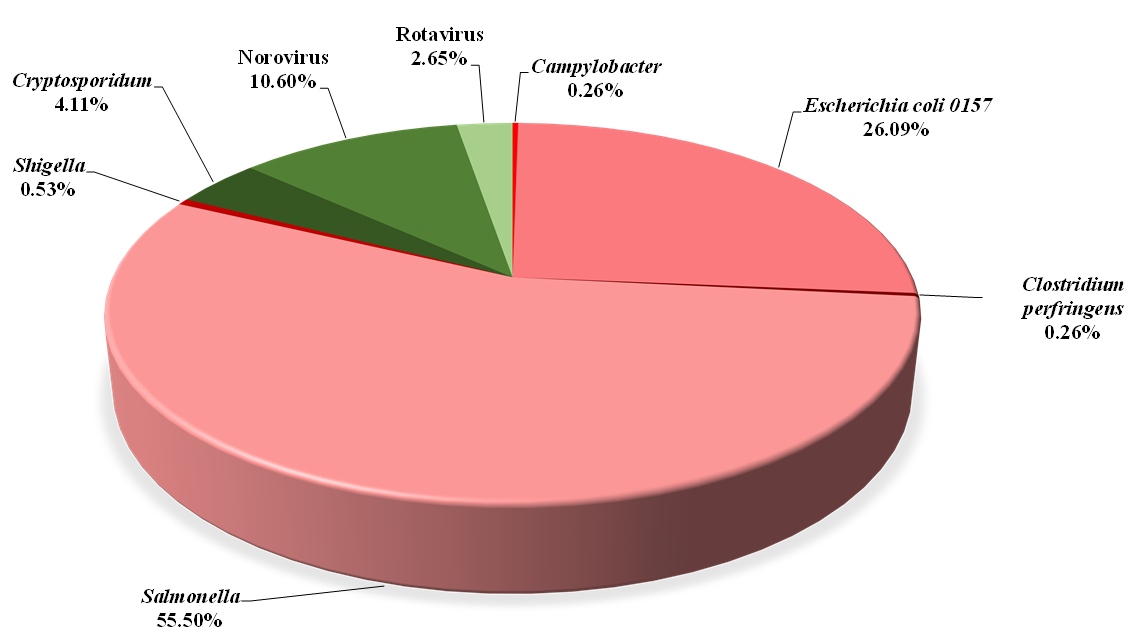The Importance in Controlling Campylobacter
Campylobacter is being recognised as one of the important causes of food poisoning in the UK, and its prevalence is directly related with the poultry supply chain. A report produced by the Food Standard Agency (The Second Infectious Intestinal Disease Study-Project B18021 (2014)) described a GP presentation study where stools were collected from all patients complaining of gastrointestinal problems which identified 18 different microorganisms (bacteria, protozoa and viruses) using culturing and molecular (PCR and ELISA) techniques. Campylobacter and Norovirus were found to be most commonly occurring effecting 13% and 12.4% of patients, respectively. The incidence of Campylobacter surpassed the occurrence of other bacterial infections caused by Clostridium difficule (1.4%), Salmonella (0.8%) and Escherichia coli (1.4%). However, in 48.6% cases of reported gastrointestinal problems revealed that no pathogen could be identified.

Figure 1 The distribution of gastrointestinal cases which have been identified to known microorganisms (unknown pathogens were excluded). Those marked in red are bacteria, those in green are protozoa and those in blue are viruses. Data obtained from "The Second Infectious Intestinal Disease Study-Project B18021 (2014)".

Figure 2 The distribution of people affected with known pathogens that required hospitalization after outbreaks in the UK.
